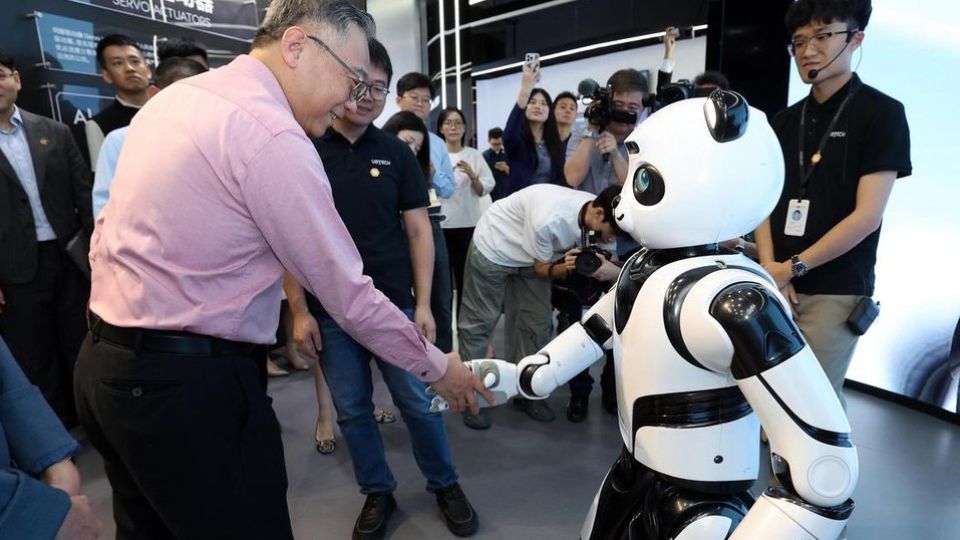September 3, 2025
SHENZHEN – Singapore and Shenzhen are gateways that can work together to spur investment between South-east Asia and China’s Greater Bay Area, with companies from the Republic keen to continue investing in the southern tech hub and in Greater China, said Deputy Prime Minister Gan Kim Yong.
He invited Shenzhen’s firms to look at opportunities in Singapore and its immediate neighbourhood, highlighting the Sijori Growth Triangle that encompasses Singapore, Johor in Malaysia and the Riau Islands in Indonesia.
DPM Gan was in Shenzhen in Guangdong province on the second leg of his working visit to China, and was speaking at a meeting with the city’s Party Secretary Meng Fanli.
Shenzhen is one of China’s economic growth engines, home to an array of tech giants such as Huawei, Tencent and BYD, and a youthful population of about 18 million. Its gross domestic product of 3.68 trillion yuan (S$664 billion) is the third largest of China’s cities, trailing Shanghai and Beijing.
The leaders discussed ways to strengthen cooperation between the two cities, with Mr Gan pointing to the digital economy, green economy, supply chains, healthcare services and biotech development as areas that Singapore was interested in.
Singapore and Shenzhen have collaborated on the Singapore-China (Shenzhen) Smart City Initiative project since 2019.
The initiative aims to boost digital connectivity, promote innovation, and create opportunities for companies on both sides to tap markets in the Guangdong-Hong Kong-Macau Greater Bay Area and South-east Asia.
Mr Meng said he hoped to build on this foundation to expand cooperation into fields such as artificial intelligence and the digital economy.
He also pointed to strong trade and investment links between Singapore and Shenzhen, with investments by Shenzhen companies in Singapore going from US$450 million (S$579 million) in 2024 to US$640 million in the first half of 2025, he said.
Singapore firms invested US$410 million in Shenzhen in 2024, and US$270 million in the first half of 2025, said Mr Meng.
DPM Gan said the Republic’s companies are keen to continue investing in Shenzhen and in China.
“We recognise that currently, the economy in China is facing significant headwinds, but we believe in the underlying long-term potential of the Chinese economy,” he added.
Mr Gan highlighted similarities in the roles which Shenzhen and Singapore play, as gateways to the Greater Bay Area and South-east Asia respectively, and as nodes in regional growth triangles – Shenzhen’s being the Guangzhou-Shenzhen-Hong Kong cluster.
The Sijori Growth Triangle, initiated in the late 1980s, is aimed at attracting investors to the region by capitalising on each member’s relative strengths.
It made the news again this July, after Singapore, Malaysia and Indonesia held talks to explore more economic integration between the island state, the Riau Islands, and the Johor-Singapore Special Economic Zone.
“I think it will be very interesting if Singapore and Shenzhen can work together and become a gateway between the Greater Bay Area and the growth triangle in Singapore,” Mr Gan said, welcoming Shenzhen companies to explore what the region had to offer.
Companies could invest in Johor for manufacturing, Batam for raw materials, and Singapore for logistics and as their headquarters, he added.
Mr Gan and Mr Meng also discussed deepening cooperation beyond the economic realm, including in tourism and people-to-people exchanges.
Mr Meng said Singapore was Shenzhen’s largest source of foreign visitors in 2025 to date, a position held by the United States in 2024 and Malaysia in 2023.
Mr Gan said that both sides could explore facilitating the development of tourism products, since many Singaporeans holidayed in China, while many Chinese also holidayed in Singapore and South-east Asia.
He also highlighted student exchanges as a valuable opportunity to strengthen people-to-people ties, noting that he had met several Singaporean students who were in Shenzhen on exchange at a reception with overseas Singaporeans on the evening of Sept 1
Mr Meng also quipped that one of his subordinates had just applied for leave to take their daughter to university in Singapore.
He separately highlighted how many Chinese officials and businessmen had gone to Singapore for training or study visits, especially in the 1980s and 1990s, while Singaporean experts also visited China to share their experiences as the country developed its cities.
He identified city management as another area that both sides could cooperate more on. Singapore had many best practices on this front, he said. “We often read about these in books and on the internet, and continue to learn (from these).”
While in the city, Mr Gan also visited Chinese tech companies to “learn about new technologies that have been created in Shenzhen”, he wrote in a LinkedIn post.
He visited the Shenzhen InnoX Academy, an accelerator for early-stage tech start-ups, and UBTech Robotics, a leading maker of humanoids and service robots.
He also watched a live demonstration of a drone delivery to a park in Shenzhen’s city centre, one of several such routes operated by food delivery giant Meituan in selected Chinese cities.
“It was fascinating to see how these technologies can be adopted to improve efficiency in everyday life, and to think about how these lessons can be applied back in Singapore,” he said in the post.
Mr Gan later left Shenzhen for Beijing, where he will attend a parade marking the end of World War II on Sept 3, and have meetings with Chinese leaders on Sept 4.

